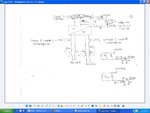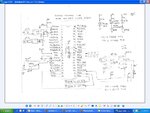asimraufawan
Member level 2
Dear All,
I need to built a circuit to measure energy supplied by solar system . The system is providing 60 Watt load separately to two houses by one inverter 12 DC input & 220 VAC output. The maximum current consumption of one house is 0.27 Ampere at 220 AC. Here i want to built a microcontroller based circuit so that i can measure the energy consumed by two houses in 24 hours of time.
The conditions are as follows.
1. 10 units of quota for each house in one month.
2. 0.3 units will be allocated to one house in 24 hours.
3. There will be two analog signals from C.T
4. If one house consumed 0.3 units before 24 hours cycle the supply will cut off through relay.
5. If the 0.3 units will not consumed in 24 hours the energy calculation will automatically reset for next 24 hours cycle.
Above conditions are the main requirement other than this do i need the clock IC for 24 hours cycle or i can do this in PIC16F877A, i have build a circuit diagram kindly let me know is it correct or i need to add or delete any component in my circuit.
Also how to select C.T or what will be the C.T rating for this application.
Kindly help me out.
Thanks.
I need to built a circuit to measure energy supplied by solar system . The system is providing 60 Watt load separately to two houses by one inverter 12 DC input & 220 VAC output. The maximum current consumption of one house is 0.27 Ampere at 220 AC. Here i want to built a microcontroller based circuit so that i can measure the energy consumed by two houses in 24 hours of time.
The conditions are as follows.
1. 10 units of quota for each house in one month.
2. 0.3 units will be allocated to one house in 24 hours.
3. There will be two analog signals from C.T
4. If one house consumed 0.3 units before 24 hours cycle the supply will cut off through relay.
5. If the 0.3 units will not consumed in 24 hours the energy calculation will automatically reset for next 24 hours cycle.
Above conditions are the main requirement other than this do i need the clock IC for 24 hours cycle or i can do this in PIC16F877A, i have build a circuit diagram kindly let me know is it correct or i need to add or delete any component in my circuit.
Also how to select C.T or what will be the C.T rating for this application.
Kindly help me out.
Thanks.

